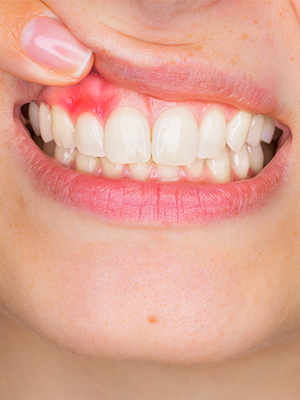- Home
- About
- Patient Center
- Dental Services
- Implants
- Cosmetic
- Orthodontics
- Blog
- Contact
Gum Disease
Why Are My Teeth Shifting with More Spacing?
Gum disease is one of the most common issues we as dentists fight. Also known as periodontal disease, gum disease is one of the major contributors to tooth loss. During your regularly scheduled appointments, we check for any early signs of gum disease including but not limited to receding gums, inflamed gums, and bleeding gums. Often times tooth shifting is a primary indicator there is underlying bone loss from gum disease.
What Causes Gum Disease?
Gum disease is caused by bacteria from the built-up plaque on and in between your teeth. Without proper brushing, flossing, and regular dentist visits, it is easy for these bacteria to eat away at your gums.
Periodontal disease forms just below the gum line and creates small pockets that separate the gums from the teeth. Periodontal disease has two stages: gingivitis and periodontitis.
Gingivitis-This is the first stage of gum disease. If you have red, swollen gums, you could have the early signs of gum disease. The good thing is that gingivitis is treatable with proper brushing, flossing, and checkups.
Periodontitis- If you have gingivitis and leave it untreated, it will advance into periodontitis which causes irreversible damage to your gums and bones which support your teeth.
Factors that can Increase Your Change of Gum Disease:
- Smoking or using chewing tobacco
- Diabetes
- Certain types of medication such as steroids, anti-epilepsy drugs, cancer therapy drugs, calcium channel blockers, and oral contraceptives
- Bridges that no longer fit properly
- Crooked teeth
- Old fillings
- Pregnancy
Other Symptoms of Gum Disease Include:
- Gums that bleed easily
- Red, swollen, tender gums
- Gums that have pulled away from the teeth
- Persistent bad breath or bad taste
- Pus between your teeth and gums
- Permanent teeth that are loose or separating
- Any change in the way your teeth fit together when you bite
- Any change in the fit of partial dentures
Treatments for Gum Disease
The treatment for gum diseases may vary patient-patient depending on severity and preference. Common treatments include:
- Increase in frequency of hygiene visits
- Non-surgical treatments are called scaling and root planing (deep cleaning)
- Periodontal surgery and laser gum surgery
- Dental implants
How to Prevent Gum Disease
Again, proper brushing, flossing, and regular checkups are key to remaining gum disease free. Not only going through the motions of brushing and flossing but also making sure that you are using the proper toothbrush and toothpaste and are using correct techniques when flossing.
Brushing at least twice a day, using a soft-bristle toothbrush and toothpaste with fluoride will reduce your risk of gum disease. In addition, floss in between all teeth at least once a day.
Contact Us
If you have any questions on your oral hygiene habits and gum disease, contact our office today.




